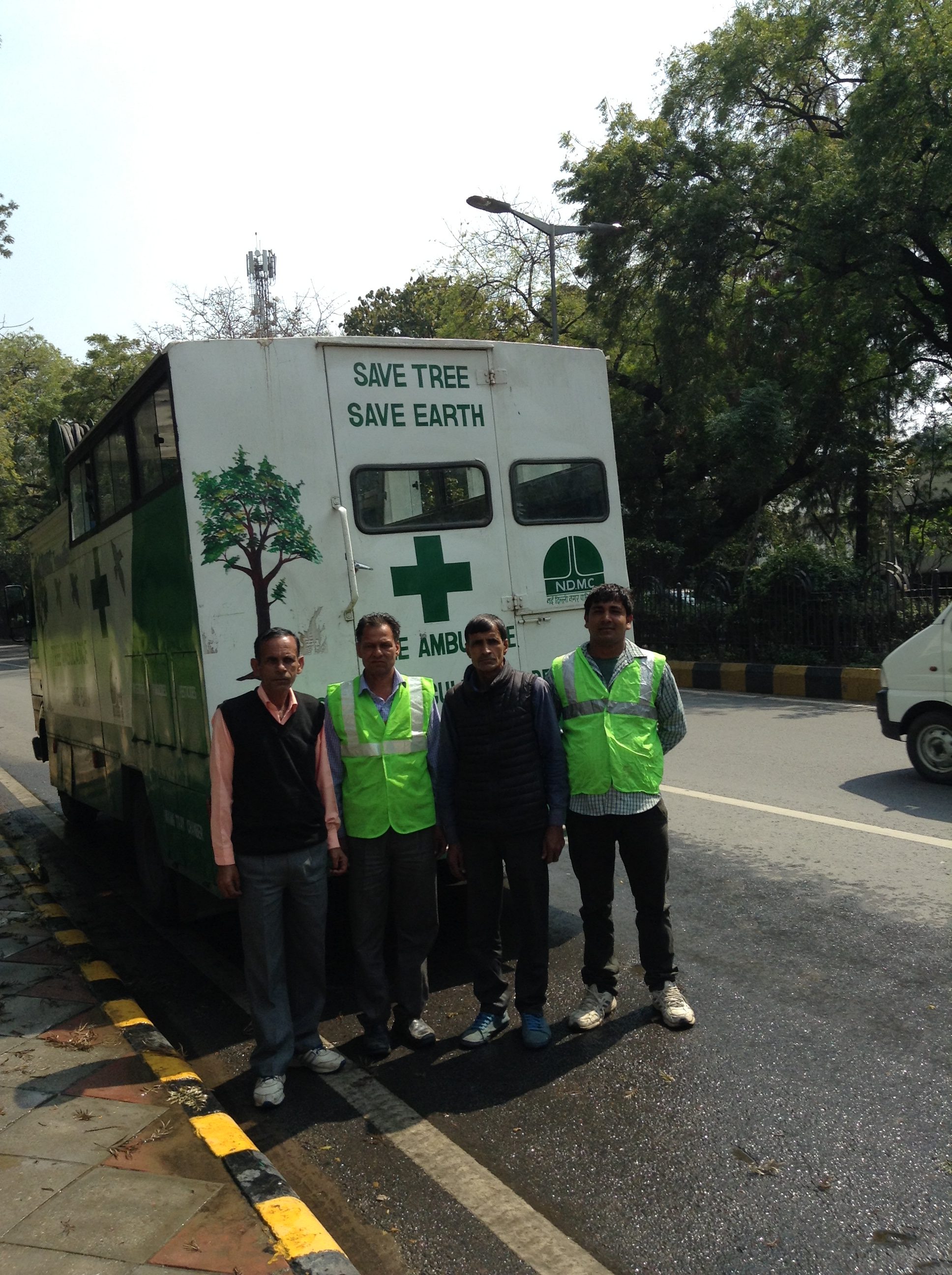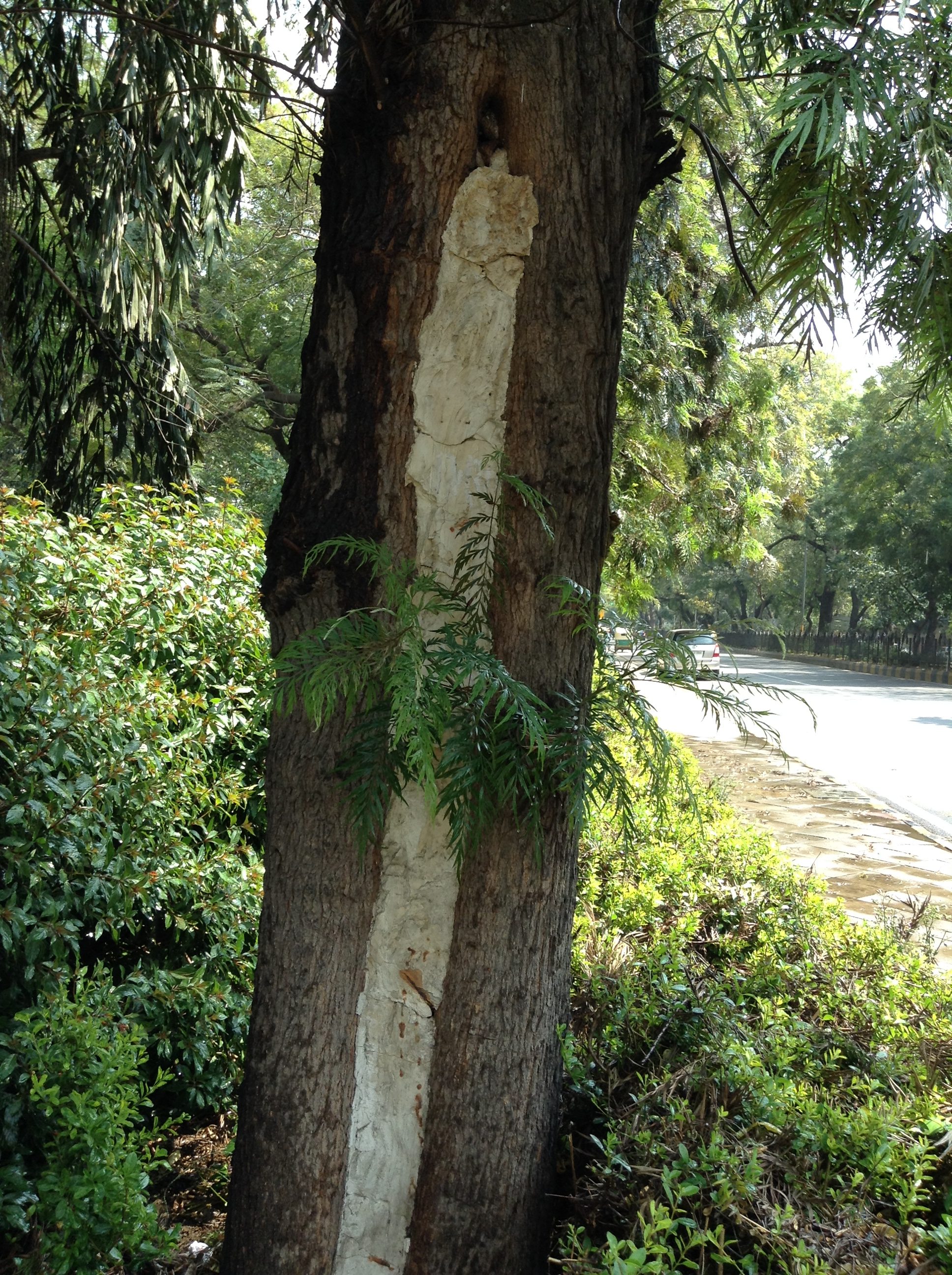What Happens When Trees Fall Sick? In Delhi, an Ambulance Comes to Their Rescue
All living things are prone to disease and decay. Somehow, very few of us attribute illness to trees.

What does a tree do when it has problems? Trees cannot move and visit a doctor, or go to someone who will be able to understand their health issues and provide them with appropriate treatment. It is we who have to go to the tree, diagnose the problem and treat it.
After the monsoons in 2009, in the area maintained by the New Delhi Municipal Corporation, around a 100 trees were found uprooted. These trees, which were only about 25 years old, were unable to withstand the fury of nature. While their counterparts, which are more than a century old, battled the heavy rain and stood rooted to the ground.
“It was a little after that, in February 2010 that the first Tree Ambulance was inaugurated in the NDMC area to take care of the trees in this region. Most of the trees in Lutyen’s Delhi, where the NDMC primarily operates, have been planted in the early 20th century, supposedly between 1911 and 1925,” says Mr Jitender Kaushik, assistant director, NDMC.
These more-than-a-century-old-trees, have their own health issues and in the past seven years, this tree ambulance has been able to effectively deal with them.

The tree ambulance owned and operated by the NDMC is a customized vehicle, which can carry pesticides, fungicides, insecticides, a really long pipe fitted onto a motor, which is used to wash the leaves of the trees, and a tall ladder that can help anyone reach right to the top of a 60-foot tree. Trees suffer from various diseases that are generally induced by pests, fungi and insects. Hollowness in the tree trunk is a major issue that almost all old trees have to deal with.
The team operating the ambulance and taking care of the trees comprises; Rohtash Sharma, the supervisor, Beghraj the driver, and Anokhelal and Sunil who are the men working on ground. There were two more people who were part of this team till they recently retired from service.
This team of four individuals is employed by the NDMC for just this one job.

They have received special training at the Forest Research Institute, Dehra Dun, at the Indian Agricultural Research Institute, Pusa and at the School of Gardening at the Purana Quila Nursery in Delhi and are extremely proficient in looking out for the medical problems in trees and administering the righter medication for it.
“Within the first couple of years we learnt a lot more on ground when we put all our book knowledge into practice. Now we have become experts in detecting problem of trees even when we are driving past them,” says Rohtash Sharma.
Often, people who see trees in the vicinity having problems give the NDMC tree ambulance authorities a call, and the team members respond to it as soon as they can. If no distress call has been received, the team members move the ambulance slowly along the roads, keeping a watchful eye out for any tree that requires assistance.
One of the major problems that these old trees face is hollowness of the tree trunk.

The team has to first detect what has caused the hollowness of the trunk of a particular tree. The hollow cavity of the trunk is then washed clean and sprayed with the right medication to kill whatever is causing the disease. The cavity is then filled with inert material like thermocol or foam. As the tree begins to recover and new cells begin to grow in this region, the external material is usually pushed out of what was once a diseased cavity.
Earlier, cement or concrete was used to fill the hollow tree cavity after treatment was administered. However, soon the team found that cement and concrete hampered healing and also the growth of new cells. Moreover, in most cases the tree used to lose its flexibility too.
“Thermocol and foam have now replaced cement and concrete and the results are indeed heartening. For some trees, which need more help due to excessive disease, iron rods have to be fixed around the trunk to give the tree enough support to be able to regenerate and regrow cells within,” continues the proud supervisor.
Pollution is the biggest enemy of photosynthesis, and trees are the largest oxygen generators in the world.

In a highly polluted city like Delhi, the pores of all the leaves of the trees get blocked easily, making photosynthesis impossible. To help elevate this issue, the leaves need to be watered nicely within a span of 10-15 days. If rains do not happen regularly, the tree ambulance takes care of this need of these trees too.
Tree translocation is another activity that this team has to organise, if necessary. Over the years concrete structures, like roads and nullahs, have been built around the tree trunks and roots. This in turn hampers the comfort of the tree, making basic existence and further growth impossible. Such trees are transplanted to a nearby location or into a garden or park where they can thrive easily.
The tree ambulance of NDMC, is the only one operating in the Capital.

“There is only one tree ambulance in Delhi. Though there were plans to get more such ambulances on road, it is yet to happen. Last May, there was an old tree in Punjabi Bagh that was in severe distress. After much deliberation, the High Court issued an order to the tree ambulance of the NDMC to help provide its services to retrieve this tree,” adds Jitender Kaushik.
If more such vehicles can be made operational in all our Indian cities, our trees will get the best medical attention and will be able to live and thrive for many more years than anticipated.
Like this story? Or have something to share? Write to us: [email protected], or connect with us on Facebook and Twitter (@thebetterindia).
Aparna Menon is a freelance writer, writing for various newspapers for the past 10 years. Her main fields of interest are wildlife, heritage and history. A keen traveller, she loves to read and write and does a lot of art work too.
If you found our stories insightful, informative, or even just enjoyable, we invite you to consider making a voluntary payment to support the work we do at The Better India. Your contribution helps us continue producing quality content that educates, inspires, and drives positive change.
Choose one of the payment options below for your contribution-
By paying for the stories you value, you directly contribute to sustaining our efforts focused on making a difference in the world. Together, let's ensure that impactful stories continue to be told and shared, enriching lives and communities alike.
Thank you for your support. Here are some frequently asked questions you might find helpful to know why you are contributing?


This story made me
-
97
-
121
-
89
-
167














